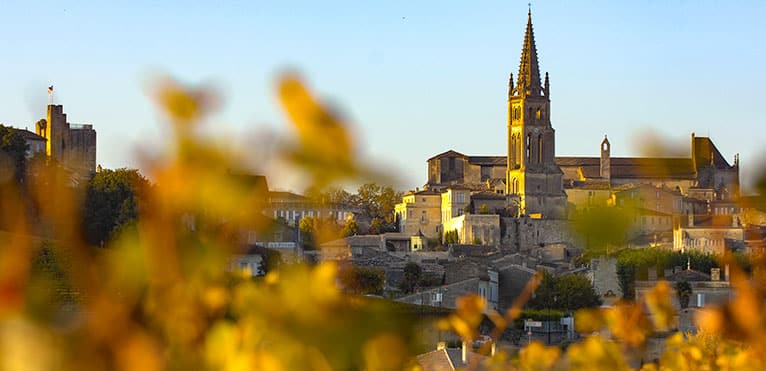
Contents
Located near Bordeaux, in the Entre-deux-Mers region, the Loupiac appellation has long been appreciated for its sweet white wines, nicknamed “the sweet wines of the right bank”, as opposed to the sweet wines of the left bank such as Sauternes or Barsac. It’s an Appellation d’Origine Protégée (AOP) and an Appellation d’Origine Contrôlée (AOC).
Loupiac vineyards date back to antiquity
The Loupiac vineyardsLike the neighboring Sauternes and Barsac vineyards, these vineyards have the ideal natural conditions for the production of sweet wines: they are clayey-limestone or clayey-sandy, south-facing, have ideal drainage, and are subject to heat and fog in autumn… Man soon noticed that these circumstances were conducive to the development of Botrytis Cinerea, a fungus that makes it possible to produce the great sweet white wines of Bordeaux. Vineyards developed on these lands as early as the 13th century. The Loupiac AOC was recognized in 1936 and applies only to white wines.
The appellation authorizes production of up to 44 hectoliters per hectare, or around 13,000 hl per year. Harvesting is carried out by hand once the grapes are well botrytized, allowing the sweetest grapes to be picked. The alcoholic strength of Loupiac ranges from 12% to 21% vol. Its target firming sugar content is 45g/L.
The exceptional terroir of Loupiac
South of Bordeaux, the Loupiac vineyards are located in the Entre-deux-Mers region, in the commune of Loupiac and close to the Cadillac and Sainte-Croix-du-Mont appellations.
in the Entre-deux-Mers region, only in the commune of Loupiac and close to the Cadillac and Sainte-Croix-du-Mont appellations.
This vineyard has a temperate oceanic climate with a microclimate specific to the geographical area. As the Ciron is cooler and the Garonne warmer, influences vary, and in autumn we see a humid climate that favors noble rot (botrytis cinerea). The 350 hectares of Loupiac vineyards are planted on clay-limestone soils and slope to the southwest. The gentle slope shelters the vines from northerly winds. It also provides good drainage for vine growth.
Tasting a Loupiac
As with other appellations in the region, the Loupiac appellation uses three different grape varieties to make its wines: Semillon, Sauvignon and Muscadelle.
Loupiac is golden or yellow with golden highlights. The nose is rich, revealing notes of honey, candied or ripe fruit, fig and sometimes roasted notes. Over time, the bouquet of this wine becomes even richer, revealing notes of toast, spices, dried fruit and flowers (especially acacia), broom, currant or prune…).
The palate, meanwhile, is elegant and well-balanced, with a certain unctuousness and richness without losing the wine’s airy, delicate profile. Loupiac wines will generally keep for 2 to 5 years, the best vintages and grands crus for 10 years, and exceptional vintages for up to 20 years.
The special profile of Loupiac
A wine with a distinctive profile, Loupiac wines are syrupy, more airy in style, with a certain delicacy and lightness on the palate, yet still powerful. They go wonderfully well with duck foie gras and fig jam, as well as fruit salad.
More generally, they are best served chilled, between 8° and 12°, with aperitifs, poultry, blue-veined or soft cheeses, and fruity desserts such as multi-fruit tarts.
Several recent exceptional vintages
For the Loupiac appellation, the vintages of the century were 1989 and 1990, and those of the millennium 1997, 2001, 2007 and 2009. In the 2000s, the appellation also made its mark with exceptional vintages in 2005 and 2010.
Loupiac estates with strong values
Château De Cranne
The story of Château de Cranne began in 1833, when Jean Villars bought a few hectares of land on the right bank of the Garonne, under mixed farming. Generation after generation, a unique know-how is being developed, focused on the authenticity and uniqueness of the terroirs, as well as exchange and sharing. Today, it’s already the 6thth generation producer of these generous, gourmet wines, from 43 hectares of vines.
In 2005, the Château decided to turn to organic farming, out of a desire to respect and trust nature and its wonders. Today, no chemical inputs are used and the wines have no pesticide residues. The winegrowers want to achieve biodynamic viticulture, which will take this organic wine approach even further.
Olivier Fleury Vineyards
The Olivier Fleury vineyards include Château Pavillon and Château Les Roques.
Taken over in 2013 by Olivier Fleury, Château Pavillon is a historic monument built in the 18thth century century with 11 hectares of vines. It is located on the best slopes in the commune of Sainte-Croix-du-Mont and offers a sublime view of the banks of the Garonne. The terroir, where the vines are an average of 40 years old, is made up of clay-limestone soils and fossilized oysters, making it unique in the world. The vineyards are planted with 80% Semillon, 18% Sauvignon and 2% Muscadelle. The vintages produced are of exceptional quality and among the best in the world. They often win awards in competitions.
Château Les Roques in the Loupiac appellation boasts 4 hectares of old Semillon vines.